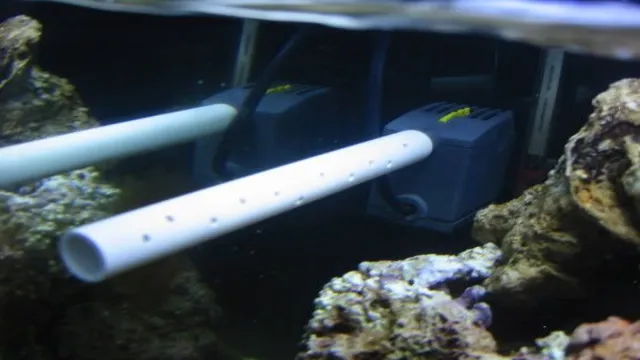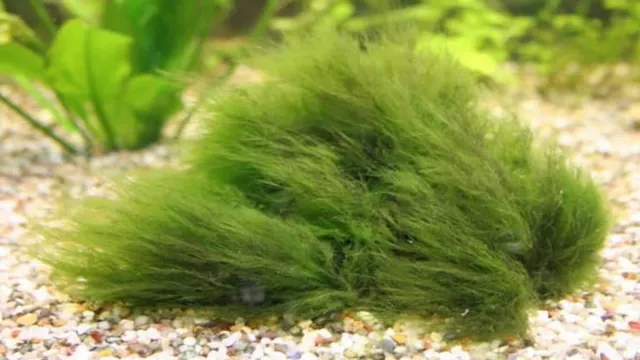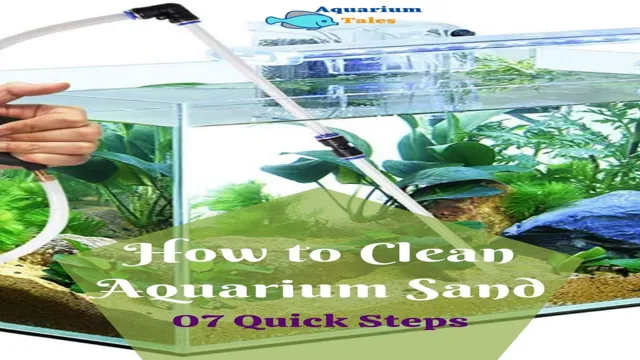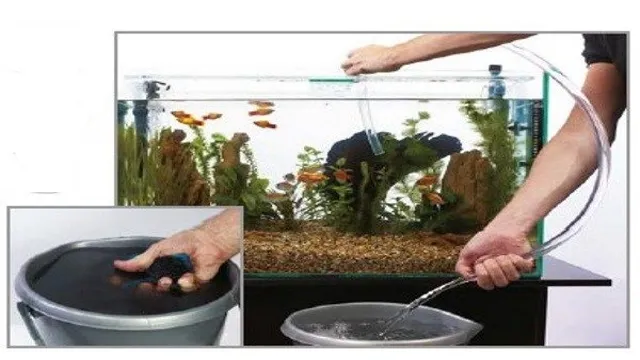Do you want to enhance the beauty of your aquarium by adding a unique and stunning plant? Water lilies are an excellent choice. The delicate and vibrant flowers of a water lily can bring a touch of exotic elegance to your underwater world. Adding a water lily to your aquarium isn’t as complicated as it may seem, and this blog will help you through the process step-by-step.
So, grab your gardening gloves and let’s dive into the world of water lilies!
Preparation
So, you want to add a beautiful water lily to your aquarium. Well, first things first, you need to make sure your aquarium is the right size for the plant. A water lily needs plenty of room to grow and spread out its leaves, so choose an aquarium with a capacity of at least 10 gallons.
Next, you’ll need to select the right type of lily. Not all water lilies are suitable for aquariums, so it’s important to do your research. Look for smaller varieties that are suited to indoor growing and have smaller leaves.
Once you have your lily, it’s time to prepare it for the aquarium. Start by removing any damaged or yellow leaves and trimming the roots. Make sure the pot you’re using is clean and free from any dirt or debris.
Fill the pot with a nutrient-rich substrate, then plant the water lily and cover the roots with more substrate. Finally, place the pot into the aquarium, making sure it’s securely anchored and positioned in a spot that gets plenty of light. With a little care and attention, your water lily will thrive and add a stunning touch to your aquarium.
Choose a Suitable Water Lily
When preparing to choose a suitable water lily for your pond or water feature, there are a few things to keep in mind. Consider the size of your pond or water feature, as well as the desired size of the water lily plant. Some water lilies can grow quite large, while others stay relatively small.
It’s also important to consider the amount of sunlight the water lily will receive, as some varieties require more sun than others. Additionally, think about the climate in your area and choose a water lily that is suitable for your region. By taking these factors into account, you can select a water lily that will thrive in your specific environment and add beauty to your outdoor space.

Select a Pot or Container
When it comes to selecting a pot or container for your plants, preparation is key. The type of pot you choose can have a significant impact on the health and growth of your plants, so it’s important to consider a few factors before making a decision. First, consider the size of your plant and how much room it will need to grow.
You don’t want to choose a pot that is too small and restricts growth, but you also don’t want to choose one that is too large and wastes valuable soil. Second, consider the material of the pot. Clay pots are breathable and great for plants that need dry soil, while plastic pots are great for moisture-loving plants.
Finally, make sure the pot has adequate drainage holes to prevent water from getting trapped and causing root rot. By taking the time to prepare and select the right pot, your plants will thrive and flourish.
Clean the Pot and Aquarium
Before introducing any fish or aquatic plants into your aquarium, it is important to properly prepare the pot and aquarium. This involves cleaning both thoroughly to create a safe and healthy environment for your aquatic pets. Begin by emptying the pot and aquarium of any water or debris, and removing any ornaments, filters, and accessories.
Scrub the pot and aquarium with warm water and a non-toxic cleaning solution. Rinse them thoroughly to remove any remaining traces of the cleaning solution before filling them with fresh water. Remember to test the water pH levels regularly and make any necessary adjustments to ensure the water stays clean and healthy for your fish and plants. (See Also: How to Clean Plastic Plants in Aquarium to Ensure Safe and Healthy Habitat)
By taking these steps, you will be creating a safe and healthy environment for your aquatic friends to thrive in, promoting their longevity and wellbeing.
Planting the Water Lily
If you’re looking to add a touch of natural beauty to your aquarium, consider putting in a water lily. These aquatic plants are not only visually appealing, but they also offer a number of benefits for your aquatic ecosystem. To get started, choose a water lily variety that is suitable for your aquarium’s size and lighting conditions.
Once you have your water lily, you’ll need to prepare a pot for it with appropriate substrate and nutrients. Then, carefully place the water lily into the pot and add water until it is fully submerged. Keep in mind that water lilies require specific care, including regular pruning and water monitoring.
But with a little effort, your aquarium will be transformed into a beautiful and vibrant underwater oasis.
Fill the Pot with Soil
One of the most important steps in planting a water lily is filling the pot with soil. This step is crucial for ensuring that the plant has the nutrients it needs to thrive and grow. The first thing you want to do is choose the right pot size for your water lily.
It’s best to choose a pot that’s about twice the size of the plant’s root ball. Once you’ve selected the pot, fill it about halfway with a good quality aquatic soil. This type of soil is specifically designed for water plants and is rich in nutrients that support plant growth.
Make sure to leave enough space at the top of the pot so that you can add a layer of gravel to help anchor the plant later on. Once the soil is in place, you’re ready to move onto the next step in planting your water lily.
Add the Water Lily to the Pot
When it comes to planting a water lily, it’s essential to add the plant properly to the pot. The first step is to choose a suitable container; it should be wide enough to fit the plant comfortably, allowing it to bloom beautifully. Then, begin by filling the pot with soil, leaving enough space for the water lily.
Center the plant in the pot, gently placing its roots in the soil. Once that’s complete, add more soil around the roots, being careful not to cover the plant’s crown. Finally, fill the pot with water until there are a few inches of water above the soil’s surface.
It’s important not to rush the process and ensure the water lily is getting the right amount of light, usually six hours of direct sunlight daily. Although some water lilies can bloom in partially shaded areas, full sunlight is ideal for a healthy plant. Moreover, you should choose the right type of fertilizer for the water lily, which will depend on the pond’s size, number of plants, and fish population.
Additionally, water lilies are often used in pond or small backyard gardens; it’s essential to keep the pond’s water clean by installing a filtration system. With proper care and maintenance, a water lily can create a beautiful and serene environment in your home, attracting various wildlife and providing a relaxing ambiance. (See Also: How to Get Less Hard Water for Aquarium: Effective Ways to Reduce Water Hardness)
Place the Pot in the Aquarium
Now that you have prepared the pot for planting the water lily, it’s time to place it in the aquarium. The pot should be submerged in shallow water with the lily pads floating on the surface. Make sure the pot is stable and doesn’t tip over.
Once you have placed the pot in the aquarium, add some gravel or pebbles to the bottom of the pot to keep it anchored. Alternatively, you can use aquatic soil if you prefer. Next, gently remove the water lily from its container and gently shake off any excess soil from the roots.
Place the water lily in the pot and cover the roots with a layer of gravel or aquatic soil. Finally, fill the aquarium with water, making sure the water level is high enough to cover the top of the pot. Your water lily will thrive in a well-maintained aquarium with the right amount of light, nutrients, and water temperature.
Remember to keep an eye on the water quality and adjust the aquarium accordingly. Keyword: Water lily.
Maintenance
One beautiful aquatic plant that can really add depth and interest to an aquarium is the water lily. While it may seem daunting to introduce a plant to your aquatic environment, putting a water lily into an aquarium is actually quite straightforward. First, ensure that you have an adequate amount of space in your tank and that the water temperature is ideal for the plant.
Then, choose a substrate such as sand or gravel that will anchor the water lily in place and provide nutrients for its roots. When placing the water lily into the substrate, gently spread its roots out and cover them with the substrate. Lastly, fill the tank with water, being careful not to cover the leaves of the water lily.
With proper care and maintenance, your water lily will thrive in its new aquatic dwelling, enhancing the beauty and natural balance of your aquarium.
Monitor Water Quality
Water quality is an essential aspect of maintaining a healthy aquatic ecosystem. It’s crucial to monitor the pH levels, dissolved oxygen, temperature, and other parameters to keep the water healthy for the flora and fauna living in it. Regular maintenance and testing are necessary to ensure that the water conditions remain optimal, and any deviations can be addressed promptly.
One way to do this is by using monitoring equipment that can detect any changes in water quality. These tools can be simple or sophisticated, depending on the level of accuracy required. Ensuring that equipment is calibrated regularly is also necessary to maintain accuracy.
Suppose the water quality is neglected, and contamination occurs. In that case, it can lead to negative environmental impacts and harm aquatic life and humans as well. Therefore, monitoring water quality should be given priority to protect the environment and public health.
Trim Excess Plant Growth
When it comes to maintaining your garden, one of the most important tasks is to trim excess plant growth. This not only helps to keep your garden looking tidy and neat but also promotes healthy growth of your plants. Overgrown plants can easily become weak and straggly, which can attract pests and diseases.
By trimming off these excess growths, you can also encourage new shoots to grow, which will help your plants to look fuller and more vibrant. So, whether it’s pruning your shrubs, deadheading your flowers or cutting back your climbers, make sure to keep on top of your greenery to ensure a flourishing garden. (See Also: How to Care for Aquarium Snail Eggs: Tips for Successful Hatching and Raising)
Conclusion
In conclusion, putting a water lily into an aquarium can seem like a daunting task, but with a bit of patience and care, it can be a delightful addition to your aquatic oasis. Take your time, choose the right variety, and make sure to provide ample light, nutrients, and space for it to thrive. And who knows, with a little luck and a green thumb, you may even find yourself with a lily pad big enough to nap on like our amphibian friends – just be sure not to disturb the fish! Happy planting!”
FAQs
What are the benefits of putting a water lily into an aquarium?
Water lilies provide shade and shelter for fish, absorb excess nutrients, and add aesthetic value to the aquarium.
How do you prepare a water lily for placement in an aquarium?
Rinse the plant thoroughly to remove any debris and trim any damaged leaves or roots. Place the plant in a container with aquarium water and allow it to acclimate for several hours before placing it in the tank.
Can water lilies survive in an aquarium with artificial lighting?
Yes, water lilies can survive with artificial lighting, but they do best with high-intensity lighting that mimics natural sunlight.
How often should water lilies be fertilized in an aquarium?
Water lilies should be fertilized once a month with an aquarium-friendly plant fertilizer to promote healthy growth.
What type of substrate is best for water lilies in an aquarium?
Water lilies do well in a fine, nutrient-rich substrate such as aquarium soil or sand.
How deep should water lilies be planted in an aquarium?
Water lilies should be planted in a pot or container with aquarium soil or sand and placed in the aquarium with the leaves floating on the surface.
How do you prevent algae growth on water lilies in an aquarium?
Keeping the aquarium water clean and well-maintained, providing adequate lighting, and avoiding overfeeding can all help prevent excessive algae growth on water lilies.







